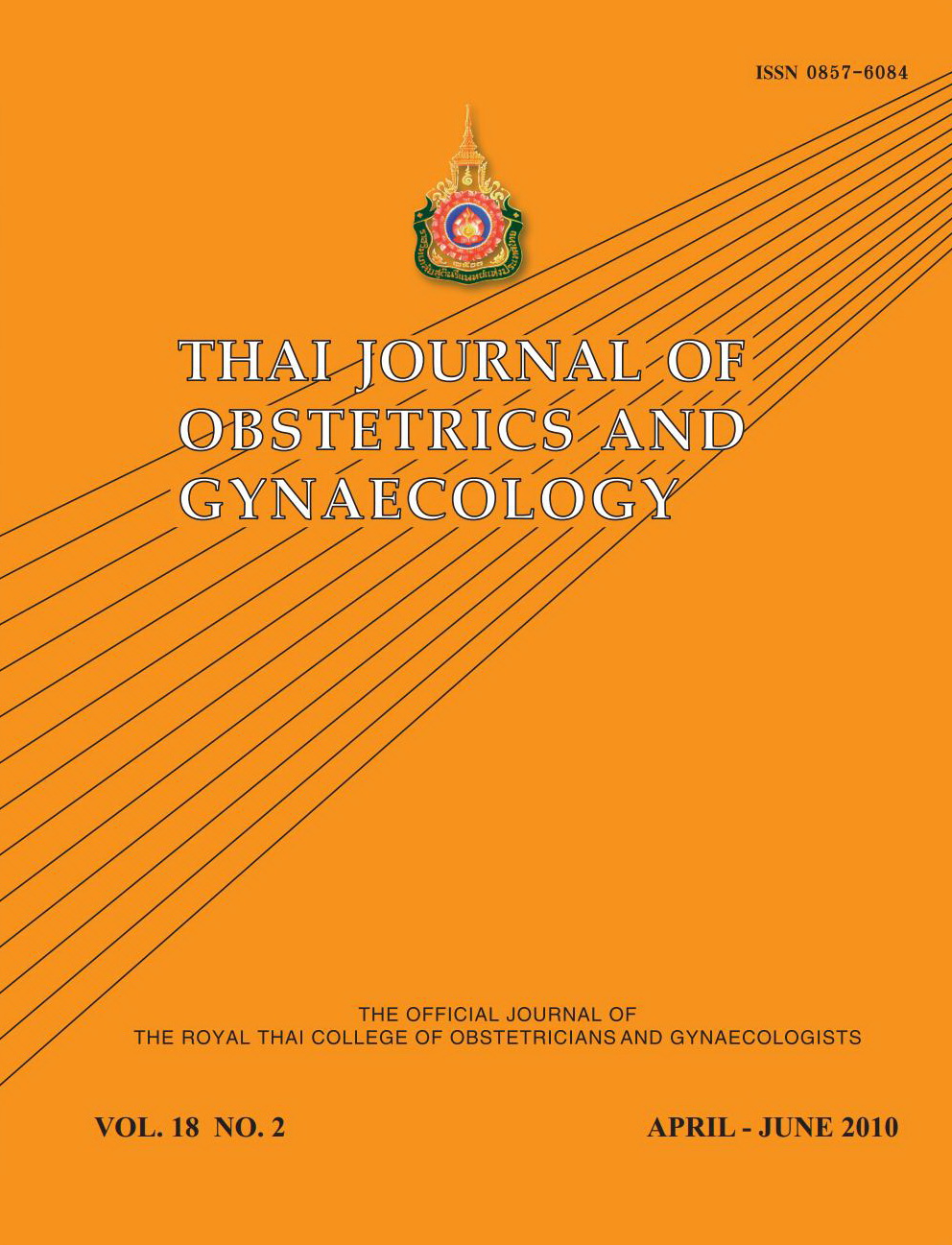Risk Factors of Birth Asphyxia in Pregnancy 37 Complete Weeks and Over by Apgar Score Less Than 7 at 5 Minutes
Main Article Content
Abstract
Objectives: To identify risk factors of birth asphyxia determine by Apgar score <7 at 5 minutes in pregnant women delivered at ≥37 weeks, of gestation.
Materials and Methods: Medical records of pregnant women with gestational age ≥37 weeks delivered at Rajavithi Hospital between January 1,1999 - June 30,2005 were reviewed. A total number of cases was 130 pregnancies with neonatal Apgar score <7 at 5 minutes and 260 pregnancies with newborns Apgar score ≥7 at 5 minutes during that period were chosen for controls. Risk factors were analyzed by univariate and multiple regression analysis.
Results: Risk factors that significantly associated with birth asphyxia in pregnancy ≥37 weeks were: small for gestational age(SGA) (OR=12.72;95%CI 5.12 - 31.61,p<0.001), prolonged PROM (OR=8.72;95%CI 1.26 - 60.12,p=0.028), narcotic analgesic used (OR=6.78;95%CI 1.31 - 35.11,p=0.023), no antenatal care (OR=5.87;95%CI 1.56 - 21.82,p=0.008), vaginal breech delivery (OR=5.64;95%CI 1.21 - 26.29,p=0.028), advance maternal age (OR=4.76;95%CI 2.15 - 10.55,p<0.001), large for gestational age (LGA) (OR=3.95;95%CI 1.09 - 14.30,p=0.037), cord compression (OR=3.78;95%CI 1.01 - 14.14,p=0.048), oxytocin usage (OR=3.50;95%CI 1.16-10.62,p=0.027) and meconium-stain amniotic fluid (OR=3.16;95%CI 1.22 - 8.23,p=0.018).
Conclusion: Risk factors significantly associated with birth asphyxia in pregnancy ≥37 weeks were SGA, prolonged PROM, narcotic analgesic used, no antenatal care, vaginal breech delivery, elderly maternal age, LGA, cord compression, oxytocin usage and meconium-stain amniotic fluid.


